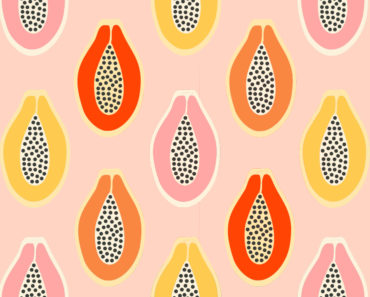Chantal Foisy’s infant son Logan cried non-stop from 8 p.m. to 6 a.m. nightly. “Nothing helped,” says Foisy, who lives in Barrie, Ontario. “It took all of my strength not to yell at him, but I knew it wasn’t his fault. Those were the longest five weeks of my life. I nearly died of happiness when the colic went away.”
My own daughter, Katharine, cried inconsolably, with her tiny fists clenched and her red face scrunched in apparent pain. She was rarely soothed by rocking, nursing, singing or car rides. When friends advised this would last “only” three months, I wanted to cry myself. I felt inadequate as a new mother. Why couldn’t I soothe my little baby?
Anyone who has endured the ceaseless wails of a colicky baby can understand the self-doubt and frustration that go along with it. Unfortunately no one really knows what causes colic, and there’s no single fool-proof cure that makes it disappear in every infant. But you can arm yourselves with tools that work at least some of the time. As every parent who has been there knows, it’s worth trying.
The good news is, colic disappears often as fast as it comes on. In the meantime, here’s what you need to know to make it through the night.
What is colic?
To diagnose a case of colic, most doctors rely on the “rule of threes”: an otherwise healthy infant who cries during the first three months of life for three or more hours a day on three or more days a week. Some experts use a looser definition, such as “excessive crying in a healthy baby.” Typically, the wails begin about two weeks after birth and peak at six or seven weeks of age. It’s often worst in the evenings. About 10 to 20 percent of babies are colicky.
Lorna Faires of Guelph, Ont., says her daughter Alyssa began crying the first night in the hospital, then seemed to calm down. “But at four weeks, it started again, and continued until she was three months old.” Alyssa usually cried in the morning from 10 to 11, then every night from about 7:30 or 8 p.m. for three hours. “She would finally go to sleep after my husband walked her for hours,” says Faires. “At one point we sent our older daughter to my mother-in-law’s house for a week so she could catch up on her sleep.” Like most parents of colicky babies, Faires doesn’t know why her daughter cried so much. “We never figured it out,” she says.
If your baby has colic, she may pull up her legs, make tight fists, burp and appear to be in pain when she cries. Still, rather than assume colic is the cause, it’s a good idea to have your family doctor or paediatrician examine the baby to rule out other conditions, such as an ear or bladder infection. “First, we have to make sure the baby is healthy,” says Jeremy Friedman, director of inpatient paediatric medicine at The Hospital for Sick Children in Toronto.
What causes colic?
Even though medical experts don’t know the cause of colic, they believe it’s within the range of normal development, albeit the unfortunate end of the spectrum. That’s because many infants cry between 30 minutes and two hours a day. Colicky babies simply cry more than average.
“We have to remember that babies have different temperaments,” says Friedman. Some babies seem to cry easily and hard as a result of their sensitive temperaments, in some cases enough to be classified as colicky. Studies have shown there’s no difference between colicky babies and their peers in development, intelligence or temper later in life. So rest assured that if your baby is colicky now, she’s not destined to be a difficult teenager 13 years from now!
In a small percentage of cases, dairy products in a mother’s diet can cause problems for her breastfed baby. If you suspect this may be the root of your baby’s colic, try eliminating all cow’s milk products for seven to ten days. If there is a change for the better, you can gradually reintroduce milk into your diet. Some sensitive babies can tolerate only a small amount of milk in their mother’s diet, but most can tolerate some, says paediatrician Jack Newman, an assistant professor at the University of Toronto faculty of medicine, who works at several Toronto breastfeeding clinics.
Bottle-fed babies can be sensitive to cow’s milk, too. Some parents contend that switching from a dairy-based formula to one based on soy helps with colic. If cow’s milk is the culprit, this could help, but it isn’t a sure thing. Some babies are allergic to soy, in which case so-called “hypoallergenic formulas,” which break down the cow’s milk, are another alternative.
Nursing babies may also be sensitive to other foods, such as corn, wheat, eggs and seafood. One study published last May in Pediatrics found that babies with colic history who were fed apple juice cried more and slept less than those fed white grape juice. However, babies without a history of colic experienced no such symptoms when fed apple juice. (Note: The Canadian Paediatric Society recommends that parents do not feed juice to infants younger than four months.) You can try eliminating foods one by one to pinpoint the culprit, but keep in mind that by the time you figure out what’s bothering your babe, the colic may have already disappeared.
Micheline Hickey-Ross of Miramichi, New Brunswick, discovered that her daughter Asa’s colic eased when she stopped eating certain foods. “She was totally different when I cut out bananas, apples, green pepper, cucumber, tomatoes and a few other foods.”
On the recommendation of a paediatrician in California, Newman has recently tried offering the mothers of colicky babies capsules of pancreatic enzymes. “It helps metabolize the proteins so they don’t get into the mother’s milk,” he says, “and we have had good success with this, although we are still experimenting with dosages.”
Some babies have reflux, a condition similar to heartburn. If your baby sucks a bit, then pulls off the breast and screams, this could be the cause of her crying. She may spit up a lot, too. (However, most babies who spit up are not suffering from reflux.) An Israeli study found that anti-reflux medication relieved symptoms within two weeks. For bottle-fed babies, the answer might be pre-digested formula, in which the protein is broken down into its amino acids. However, this is a last resort as the formula is expensive and unpleasant tasting.
Kathi Kemper, director of the Center for Holistic Pediatric Education and Research at the Children’s Hospital in Boston, says that iron-fortified formulas are better for colicky babies than low-iron brands. While bottle-feeding parents may have some luck switching formulas, there are no advantages to switching from breast to bottle, says Friedman. “Just as many bottle-fed babies have colic.” There may be some breastfeeding techniques you can employ to help ease colic, though (see “Nursing Notes”).
How can you help a colicky baby?
Your mother, next-door neighbour and hairdresser probably know someone whose baby’s colic was cured by rice cereal, a rocking chair or voodoo. Many fixes help for a short time, and everything seems to work at three or four months, when colic usually disappears. Still, there are some things parents can try that offer a genuine chance of relieving their baby’s symptoms.
Carrying your baby as much as possible has been shown to reduce crying. In The Baby Book, paediatrician William Sears writes that parents should carry babies around or start a comforting routine before the colic kicks in. Once your baby is all wound up, she’ll be harder and harder to soothe. He suggests using a baby sling or carrier. Other traditional colic remedies include a warm hot water bottle on the baby’s tummy, music, slow rhythmic rocking and running a vacuum cleaner or hair dryer for calming “white noise.” Some parents have tried putting their babies in a car seat on top of a running, cool clothes dryer. (If you try this, just make sure you don’t leave the baby unattended for even a moment.)
Some infants respond well to being snugly swaddled in a cuddly blanket. Parents spend scads of cash on swings, crib vibrators and other gadgets that claim to calm babies, but there are no guarantees these will work. As Friedman points out, some babies respond to less stimulation, not more. If nothing else seems to work, you might want to try putting your baby down in a dark room and listening to see if his crying slows after a few minutes.
You may find it helpful to keep a diary of crying times and the different tactics you use, suggests Friedman. Not only will this help you ascertain what works and what doesn’t, it might give you some hope. “Sometimes parents don’t realize that the crying is decreasing until they start keeping track.”
Here’s a look at some of the other treatments used for colic.
Herbal helpers
A 1993 study found that three to four ounces per day of a herbal tea containing chamomile, fennel, vervain, licorice and balm-mint was significantly more effective than a placebo in eliminating infant colic, according to Kemper. “It’s not known which of the herbs in the tea is the effective ingredient,” she adds, “but chamomile is a traditional tummy settler in many parts of the world.” Try putting two chamomile tea bags in a cup. Pour on boiling water and let it steep for 10 to 20 minutes until it’s cooled. Give your baby one tablespoon to one ounce, in a bottle or on a spoon, two to four times a day. “If it’s going to work for your baby,” says Kemper, “you will see results in a day or two.”
Gripe water (containing dill, caraway, fruit sugar and water) is a harmless and popular—albeit unproven—remedy. Some brands contain a small amount of alcohol, but there is no danger if you follow the instructions. If you try herbs, don’t give more than four ounces of tea per day, and use a trusted source.
Baby massage
“No scientific studies prove that massage relieves colic, but there are parents who say it helps,” says Friedman. You can lay the baby on the floor and, starting at her belly button, gently walk your fingers clockwise, forming concentric circles outward. Try this 20 to 30 minutes after a feeding.
Chiropractic and cranio-sacral therapy
Some studies have shown that chiropractic spinal manipulation is an effective colic treatment, but these studies didn’t compare the subjects to a control group of babies who weren’t treated. Also, the therapy started around the time most colic was at its worst, and continued over two weeks, when it would usually start to improve anyway. It’s important to note that in February, the Canadian Paediatric Society issued a statement saying, “There is no scientific evidence to support the safety and effectiveness of chiropractic in treating nonmusculoskeletal conditions in children.” Cranio-sacral therapy is the gentle palpation of the bones of the skull by a specialized massage therapist. Make sure you go to someone who is not only a registered massage therapist but certified by the Upledger Institute. There are no formal studies to show it’s an effective treatment for colic, though some parents claim it helps.
Homeopathy
Likewise, there is no definitive proof that homeopathy helps colicky babies. But according to Kemper, homeopathic remedies are considered safe, and they’re usually quite inexpensive. If you decide to try an alternative remedy, shop around for a practitioner who has experience with infants, and be sure to tell your family doctor. A study of homeopaths and naturopaths found that most had no formal paediatric training, and fewer than half said they would refer a two-week-old with a fever for emergency care, which suggests they might not recognize a potentially serious condition, says Kemper.
Medications
Most doctors are not big fans of the pharmaceutical approach to colic. Parents should stay away from a drug called dicyclomine hydrochloride (Bentylol), which is not recommended for babies under six months because it can cause breathing difficulties. A few doctors still prescribe it, but given the risks that is not wise. Some parents find an antispasmodic such as simethicone (Ovol) works, but there is no evidence to suggest why it would be effective. Still, it is harmless.
Finally, do not offer early solids in an attempt to cure colic. Before four months, feeding a baby solids—such as rice cereal or pureed foods—is a risk factor for developing food sensitivities.
Unfortunately, you could try every trick in the book and find that nothing works. Yet as hard as it is to imagine when you’re going through it, it won’t be long until your baby is a smiley, playful six-month-old. Those exhausting early days will gradually fade from memory after your baby — and you — outgrow colic.
Survivors ready
Donya Leonard of Lethbridge, Alberta, recalls a time when her daughter Ryleigh was screaming so much, she and her husband didn’t know what to do. “We were exhausted,” she says. “Finally we just put her in the crib and we collapsed in bed. When we woke up, she was asleep. I had no idea how long she had been sleeping.”
In an ideal world you would never leave a baby to cry it out. But if your nerves are frayed, you’re sleep deprived and you fear you could lose your patience with your baby, hand her over to someone else, or put her down in a safe place, like a crib, take a deep breath, and leave the room. Remember that shaking a baby may damage her fragile brain, sometimes fatally. Put someone else in charge, even for ten minutes, so you can make yourself a cup of tea, read a magazine, meditate or find some way to relax yourself.
“Parents need a lot of support to get through this period,” says Jeremy Friedman of Toronto’s Hospital for Sick Children. “If they can, it’s a good idea to mobilize family resources so they can get a break.”
Nursing Notes
Colic is often seen in babies whose mothers have an abundant milk supply. Why is the baby crying? Some babies get colicky if they receive mostly the lower-fat milk that comes out earlier in the feed. (Hindmilk is the richer, higher-fat milk that baby gets later. Keep in mind that the fat content of the milk changes gradually, not suddenly.)
Too much foremilk gives the baby a lot of lactose all at once. In the small intestine, the protein that digests the lactose may not be able to handle so much at one time, and the baby experiences gas and sometimes even streaks of blood in the stool. These babies are not lactose-intolerant, and there is no reason to switch to formula. The remedy: Finish the first breast before offering the second so baby gets hindmilk each time. “Be sure the baby is latched on well and that he is actually drinking at the breast,” says the University of Toronto’s Jack Newman. How can you tell?
“Imagine your thumb is a straw and you are sucking up a thick liquid like a milkshake,” says Newman. “As you suck inward on your thumb, your chin stays down. The baby does the same thing when his mouth is filling with milk. If he doesn’t have a pause in the chin, he is no longer getting much. Compression can then keep the baby drinking.” (For an explanation of how to compress the breast, visit Newman’s fact sheet.)
There are no hard and fast rules when it comes to breastfeeding, contends Newman, but he does suggest offering the second side only when the baby stops drinking at the first side. You can even offer more than one feeding on each breast.
Overactive milk letdown can also contribute to colic in a breastfed baby because she gets fussy and irritable if too much milk comes too quickly. Here, too, you can try feeding the baby at one breast per feed. Lying down to nurse can help because gravity decreases the rate of milk flow. If you have time, express an ounce or two of milk before you feed the baby to slow the flow.
Ottawa lactation consultant Joan Fisher has seen desperate parents of colicky babies abandon breastfeeding and then experiment with various formulas, to no avail. Eventually, some successfully lactated again, but this route can be very difficult, and is not successful every time.

































